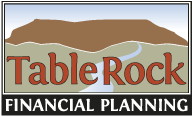Financial Planning Blog
 Awesome…But, Sorry About Your Car, Man
Awesome…But, Sorry About Your Car, Man
We may be required to buy automobile insurance, but we are not necessarily required to understand it. If you are like most people, you may have understood your coverage when you last shopped for insurance, but you would struggle if forced to explain it today.
Below is very quick summary of your automobile insurance coverage, with a few comments. However, you would be wise to skip it and simply view this short instructional video by financial planner and educator, Tim Maurer--Before You Hit the Deer...in 90 Seconds or Less. Although he doesn't quite cover his topic in 90 seconds, you get to see a clip of the deer destroying David Spade's car in Tommy Boy. (I never saw the whole move, but I certainly remember my teenage sons enjoying this scene.)
Part A--Liability Coverage
Your automobile liability coverage insures you against costs that you become legally responsible for because of injuries or property damage you caused to another person due to an automobile accident. Most policies are written on a split limit basis, with different limits for bodily injury and property damage. For example, you are probably familiar with limits being stated like this--$250,000/$500,000/100,000. This means:
- Bodily injury coverage is $250,000 per person.
- The maximum bodily injury coverage per accident is $500,000.
- The maximum property damage liability per accident is $100,000.
As Tim Maurer suggests in the video, $250K/$500K/$100K are reasonable limits. If your coverage is for less, discuss with your insurance professional whether they should be increased.
Who exactly is covered by this liability insurance? In general, it is you and your covered relatives while using any car. Also, it covers any person using your car, with your explicit permission.
Part B-Medical Payments Coverage
Sometimes referred to as "med pay", this covers reasonable medical expenses for the insured person. Whereas the liability insurance in Part A covers the other person (the one you accidently hit with your car), this coverage is for you (the insured), and the limits are significantly less (e.g. $10,000 per person). Generally speaking, this covers you, your covered relatives, and any other person in your covered automobile. It also covers you and your covered relatives if struck as a pedestrian by a motor vehicle licensed on public roads.
Medical payments coverage not only pays for resulting medical and dental expenses within three years of the accident, but also funeral expenses. Although this coverage may help pay your medical expenses in the event of an automobile accident, it should not be seen as substitute for broad based medical insurance.
Part C-Uninsured and Underinsured Motorists Coverage
In the event you are in an accident with an uninsured, or underinsured motorist, this coverage would kick in. Uninsured motorist coverage would also protect you in the event of a hit-and-run driver. Unfortunately, there are plenty of uninsured drivers out there--the Insurance Research Council estimates one out of every six. With these odds, it is certainly prudent to have this protection, with limits similar to your own liability coverage. In Idaho, insurers are required to include uninsured and underinsured coverage standard with automobile policies, however consumers have the option to reject it in writing. (Not recommended.)
Part D-Coverage for Damage to Your Auto
This includes collision coverage, which insures you for damage to your car in a collision--i.e. when there is impact or upset involved. It also includes comprehensive coverage which covers damage from anything other than collision, including fire, explosions, hail or other falling objects, and animal damage (including collisions with animals).
With collision and comprehensive coverage the insurer pays for the loss of your property, less any deductible. This is where an individual needs to be a savvy consumer, trading off the cost of the coverage versus the potential risk of loss. It may not be necessary to pay for coverage against risks you are financially capable of self insuring for. For many it is a wise decision to accept higher deductibles, or even drop collision or comprehensive coverage as the car gets older.
For those of us who drive Highway 21 often, Tim Maurer's explanation of this coverage is extremely helpful:
- If you are driving down the highway and hit a deer that jumps in your way--that is covered by comprehensive. (Almost like a tree falls over and hits you.)
- If you swerve to miss the deer and hit a tree--that is covered by collision.
- If you hit a deer, put it in the back seat, and the deer subsequently causes damage after coming back to life--ask your agent.
If you want to learn more about your auto insurance, download this consumer's guide from the National Association of Insurance Commissioners. For extra credit, you might even try reading your own policy--who knows what you'll learn.
Next page: Disclosures



